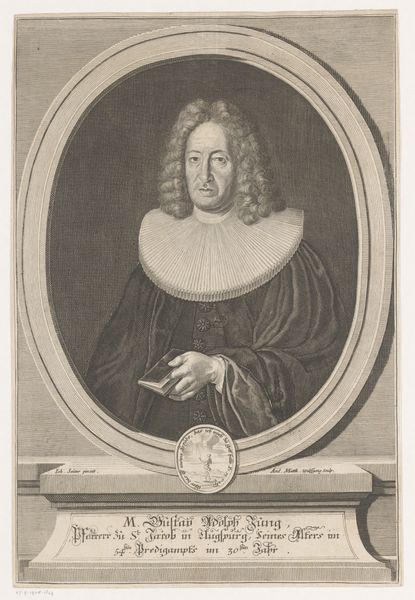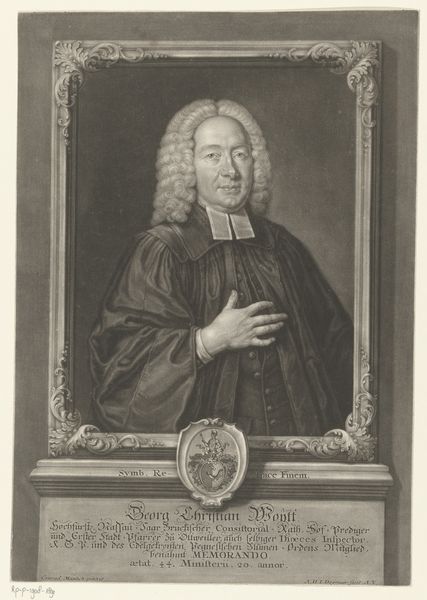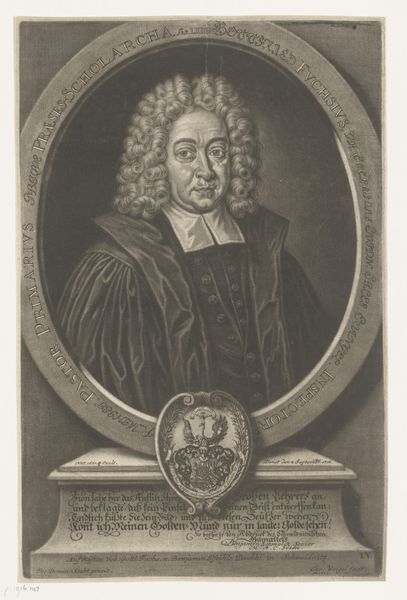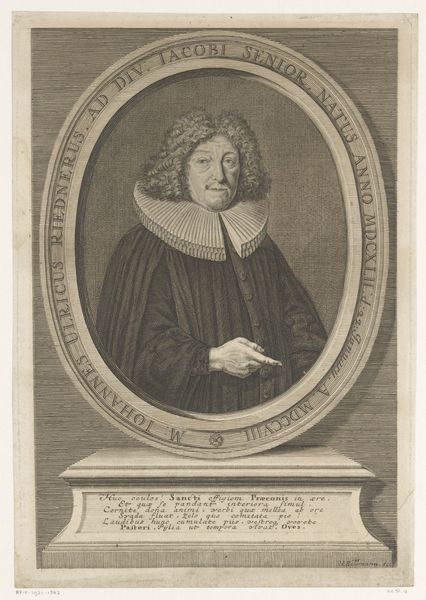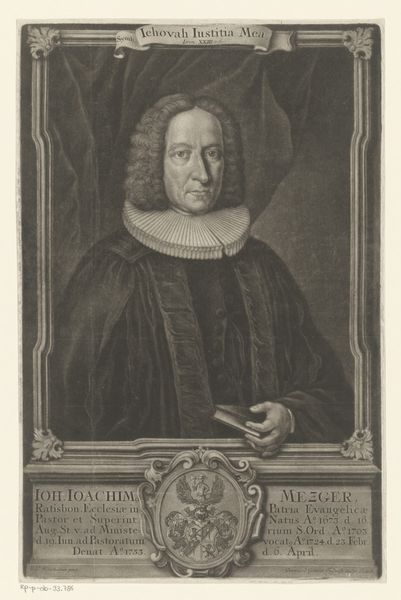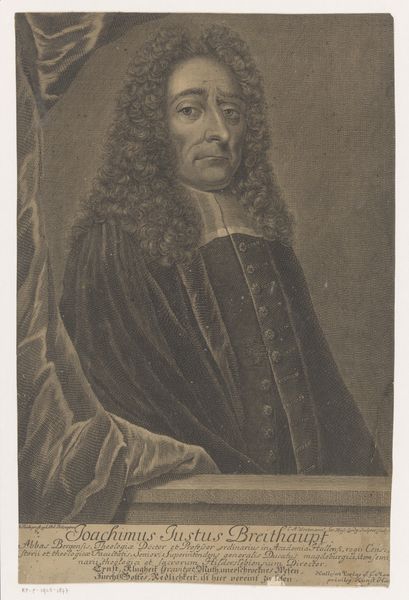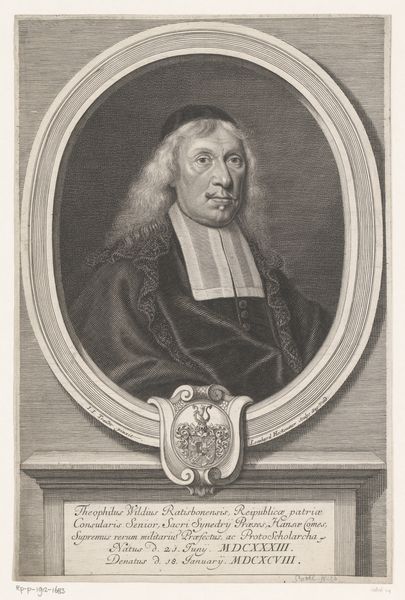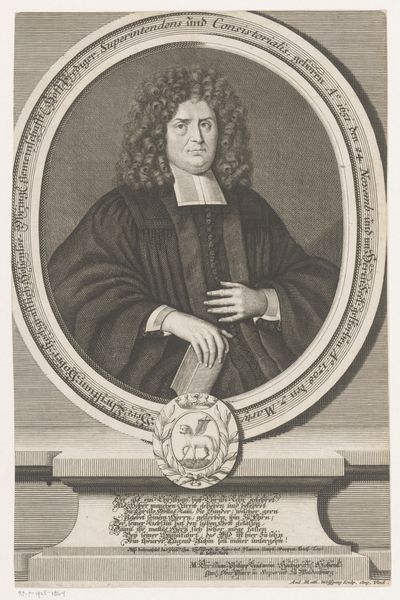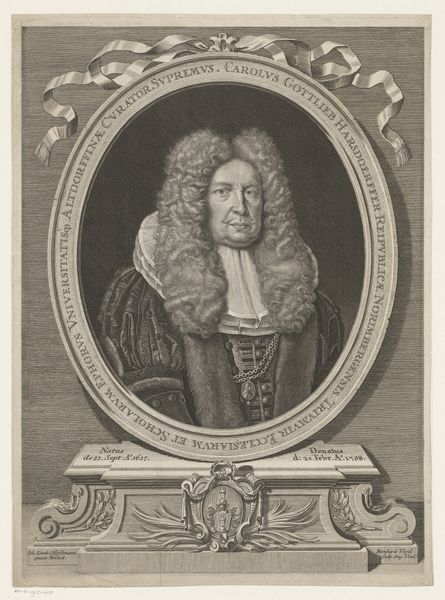
print, engraving
#
portrait
#
baroque
# print
#
old engraving style
#
historical photography
#
engraving
Dimensions: height 380 mm, width 260 mm
Copyright: Rijks Museum: Open Domain
This is Andreas Matthäus Wolfgang's engraving of Gustav Adolph Jung. Note the oval frame, a shape that subtly suggests an egg and the idea of life contained within. Inscribed around Jung's image are words that function as a symbolic boundary. The portrait bears a resemblance to those memento mori paintings, where skulls and hourglasses are stark reminders of mortality. Here, the inscription serves a similar purpose, marking the boundaries of Jung’s existence. The lettering, carefully inscribed, contrasts with the fluidity of the man's hair, a visual tension between the finite and the seemingly boundless. The ruff around Jung’s neck is a fascinating detail. Across centuries, similar neckwear has appeared—from the elaborate collars of the Elizabethan era to modern interpretations in fashion. Each iteration carries echoes of formality, status, and perhaps, a sense of constraint. Like a visual echo, it resonates with collective memories of power and identity. This image, therefore, is not merely a depiction of a man but a complex interplay of symbols.
Comments
No comments
Be the first to comment and join the conversation on the ultimate creative platform.

